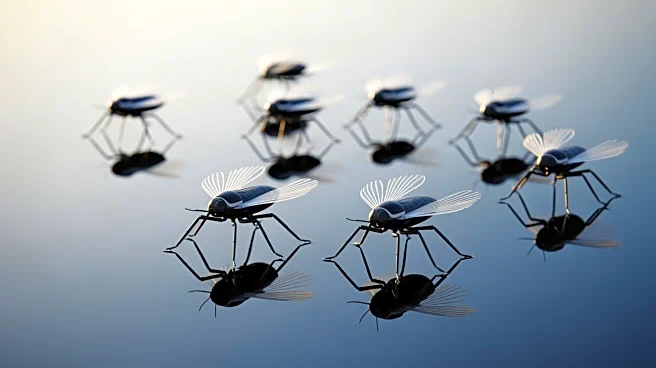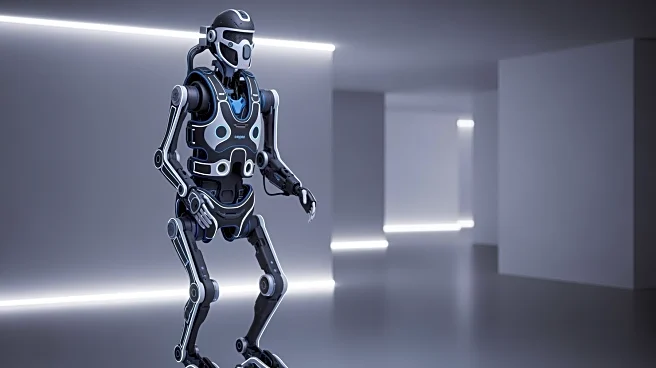What's Happening?
Engineers have developed robots that can walk on water, inspired by the ripple bugs' unique ability to move swiftly across water surfaces. These bugs, about the size of a grain of rice, utilize fanlike
hairs on their feet to zip around streams at remarkable speeds. The robots, named Rhagabots after the Latin name for ripple bugs, mimic this mechanism, allowing them to make rapid turns and brake sharply while requiring minimal energy from their onboard batteries. This innovation is part of a broader trend where engineers draw inspiration from nature, leading to creations like soft batteries and other bioinspired technologies.
Why It's Important?
The development of water-walking robots represents a significant advancement in robotics, potentially impacting various industries such as environmental monitoring and search and rescue operations. By harnessing principles observed in nature, engineers can create efficient and sustainable technologies. This approach, known as bioinspiration, is gaining traction as it offers solutions that are both innovative and environmentally friendly. However, the future of bioinspired research faces challenges due to proposed budget cuts to the National Science Foundation, which could hinder progress and shift leadership in this field to other countries.
What's Next?
The continuation of bioinspired research depends heavily on funding and collaboration between biologists and engineers. With potential budget cuts looming, researchers may need to seek alternative funding sources or partnerships to sustain their work. The success of these robots could lead to further exploration of other natural phenomena for technological advancements. Additionally, the international scientific community may play a crucial role in advancing bioinspired technologies if U.S. funding diminishes.
Beyond the Headlines
Bioinspiration not only drives technological innovation but also encourages a deeper understanding of ecological systems and their potential applications. This field highlights the importance of interdisciplinary collaboration and the need for sustainable practices in technology development. As bioinspired technologies evolve, they may also influence ethical considerations regarding the use of natural models in engineering.











